System Architecture Diagrams
To better understand how message ordering is maintained in our NATS implementation, let’s examine the workflow diagrams for both publishers and consumers.
Publisher Workflow
The publisher is responsible for generating messages and routing them to the appropriate partition based on a partition key. This ensures that messages with the same key always go to the same partition, maintaining ordering.
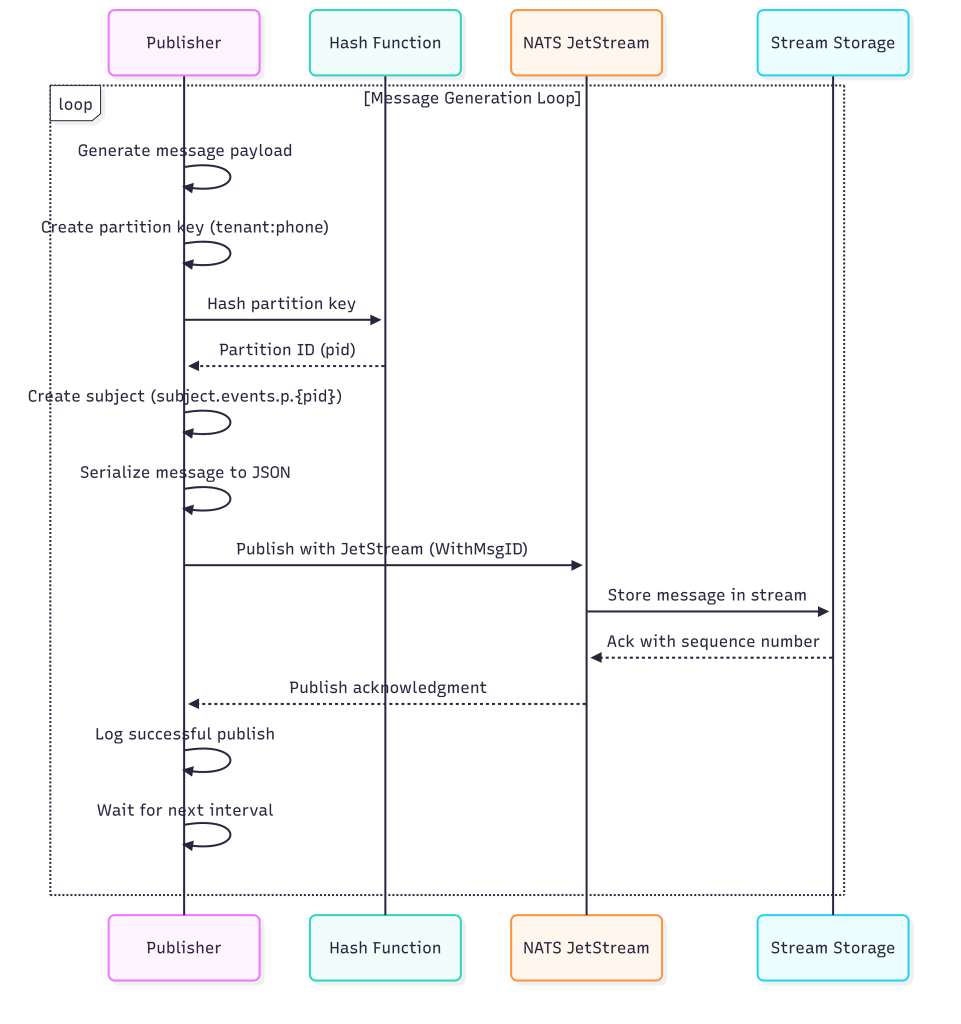
The publisher workflow ensures consistent routing of messages to partitions. By using the same partition key for related messages, we guarantee they will be processed in order by the consumer responsible for that partition.
Consumer Workflow Components
The consumer implementation is more complex, involving several key components that work together to maintain message ordering:
1. Consumer Initialization
When a consumer starts up, it must establish connections and register itself in the system:
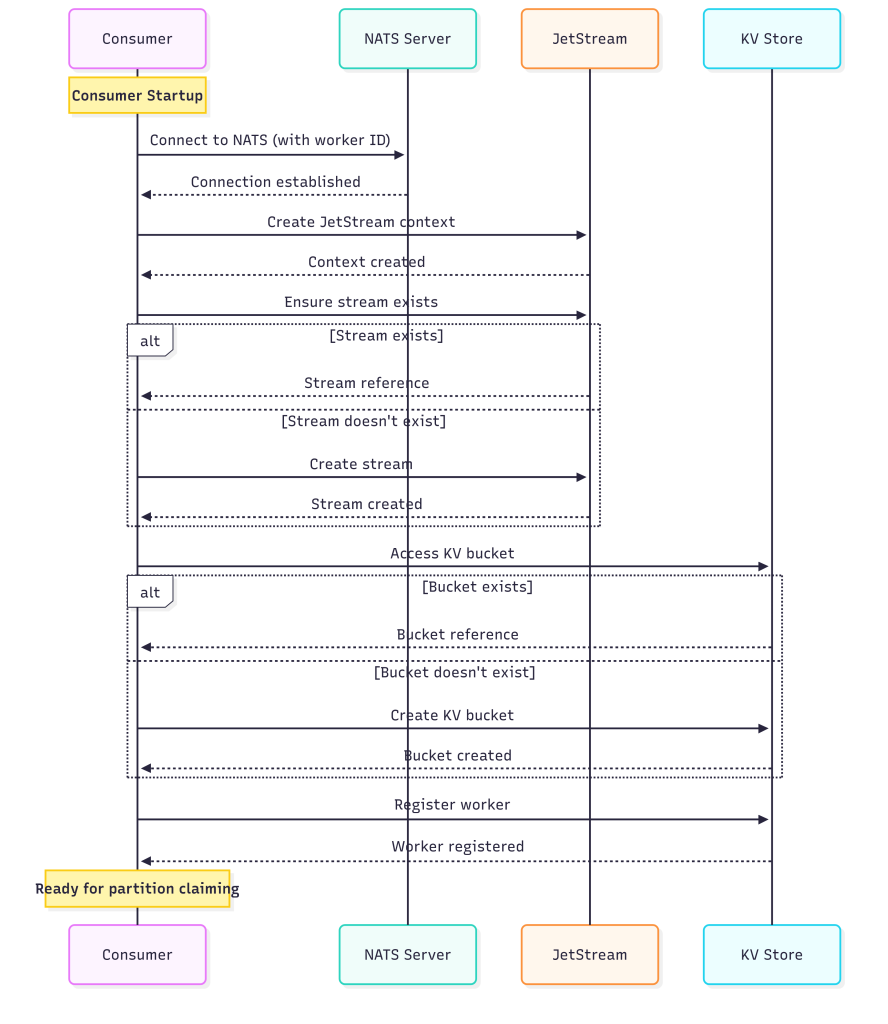
This initialization process prepares the consumer to participate in the partitioned consumption model.
2. Partition Claiming Process
Consumers use a lease-based mechanism to claim exclusive ownership of partitions:
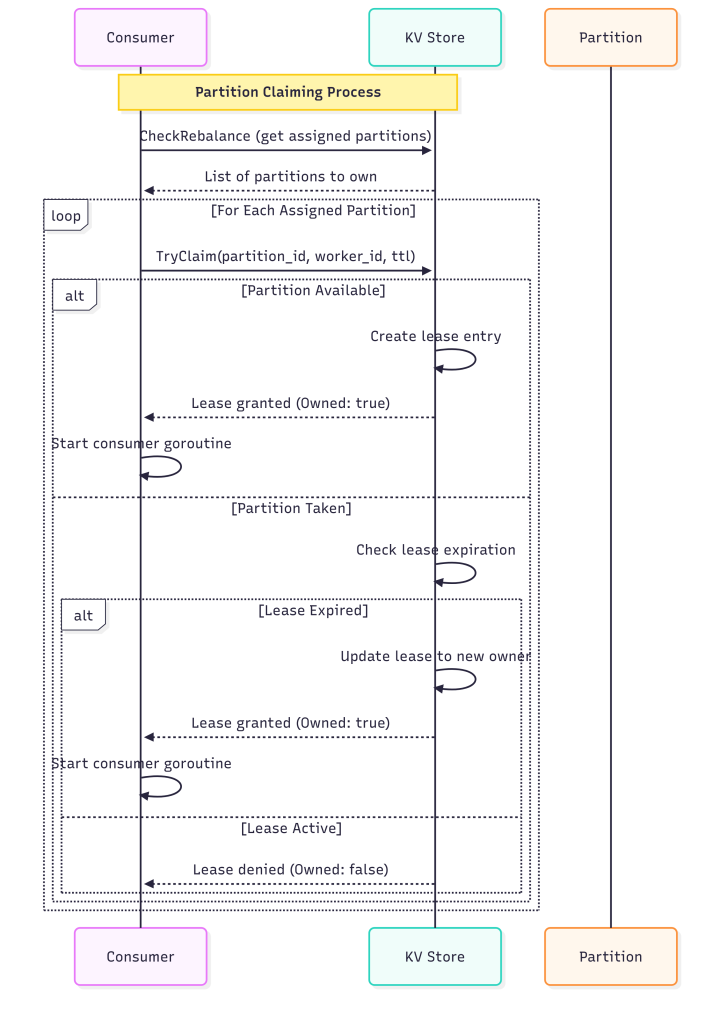
The lease mechanism ensures that only one consumer processes messages for each partition at any given time, which is essential for maintaining ordering.
3. Message Consumption Loop
Once a consumer has claimed partitions, it begins consuming messages from them:
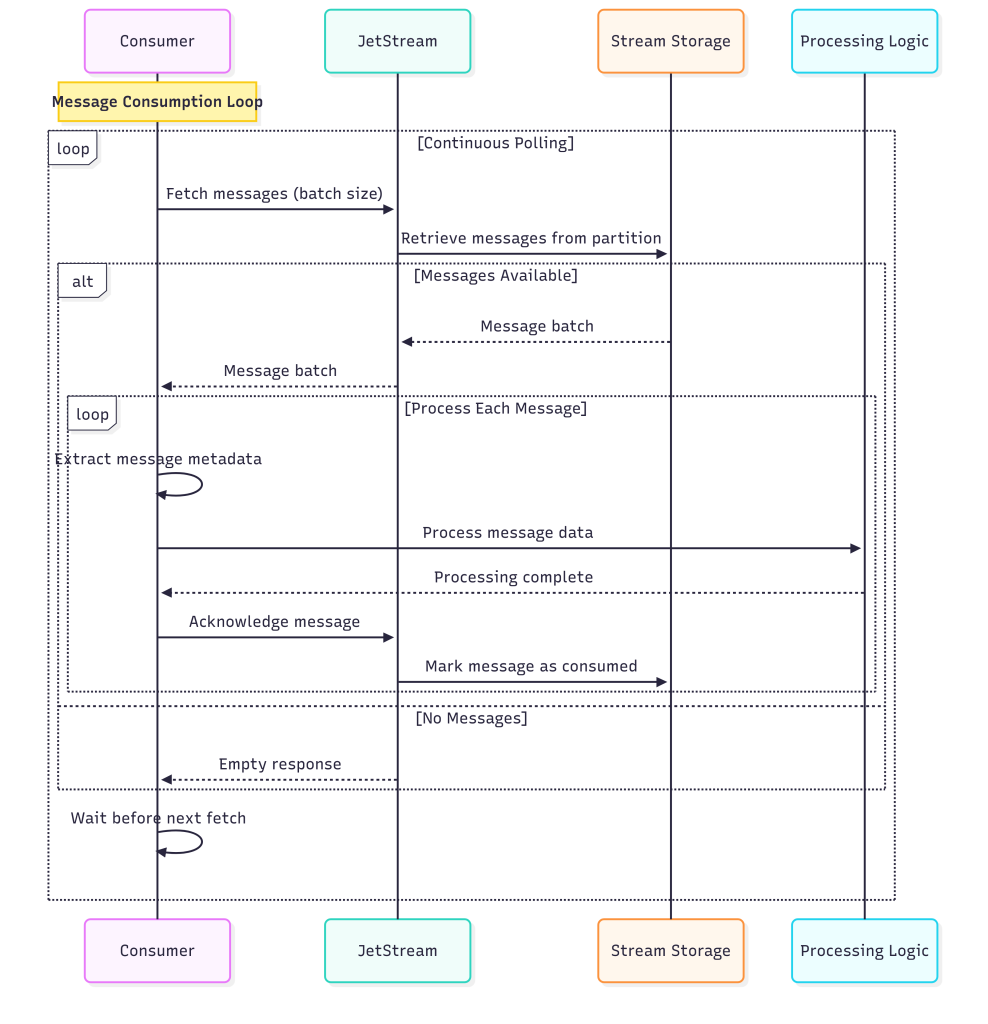
This consumption loop ensures that messages are processed sequentially within each partition.
4. Lease Renewal Mechanism
Consumers must continuously renew their leases to maintain ownership of partitions:
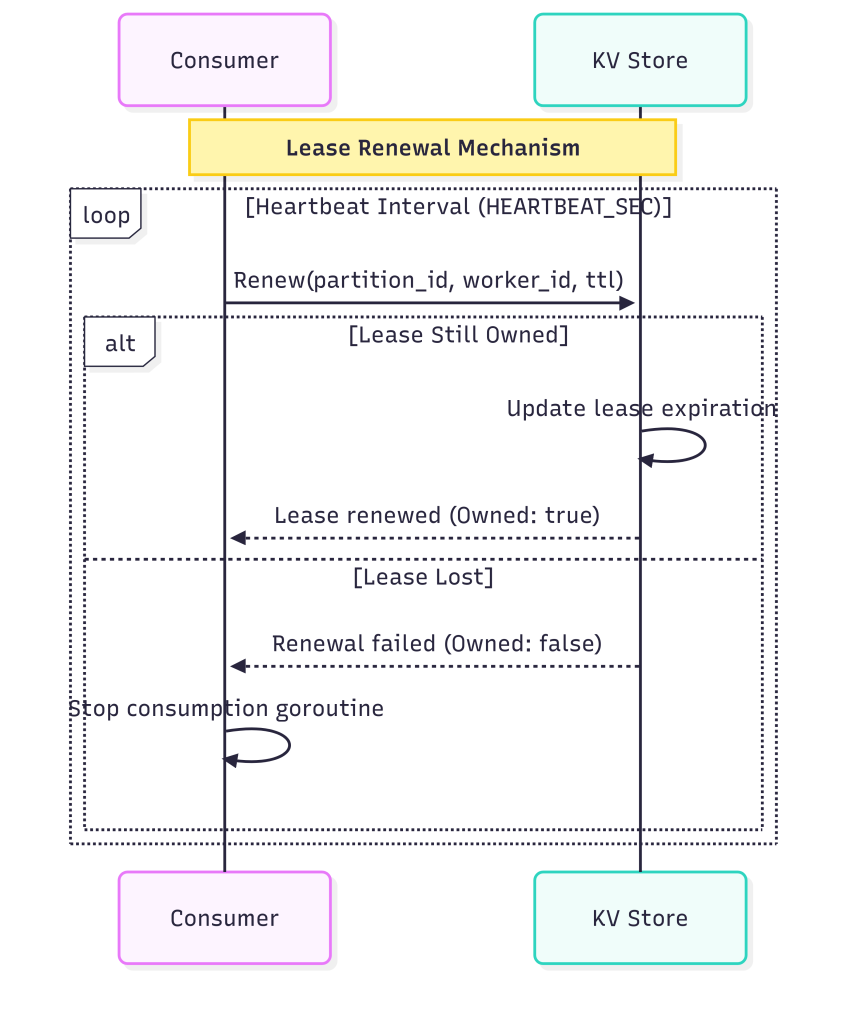
This renewal mechanism prevents partitions from being reclaimed by other consumers while the owner is still active.
5. Rebalancing Process
When consumers join or leave the system, partitions are automatically rebalanced:
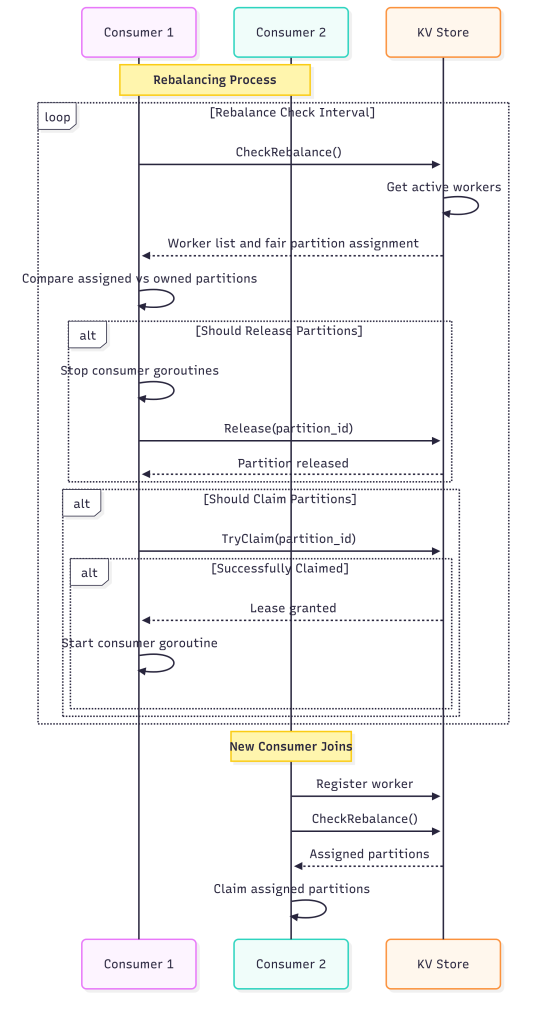
Rebalancing ensures that partitions are evenly distributed across available consumers while maintaining ordering guarantees.
6. Graceful Shutdown
When a consumer is terminated, it properly releases its partitions:
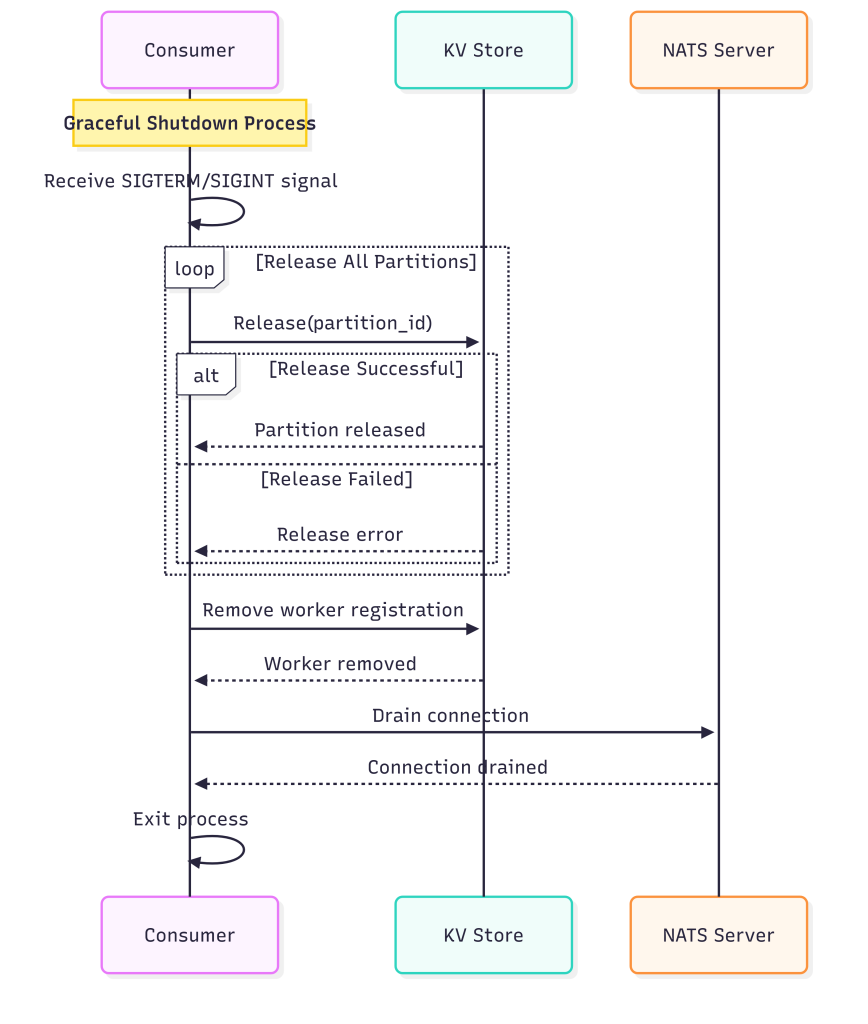
Graceful shutdown ensures that partitions are quickly made available to other consumers without message loss.
